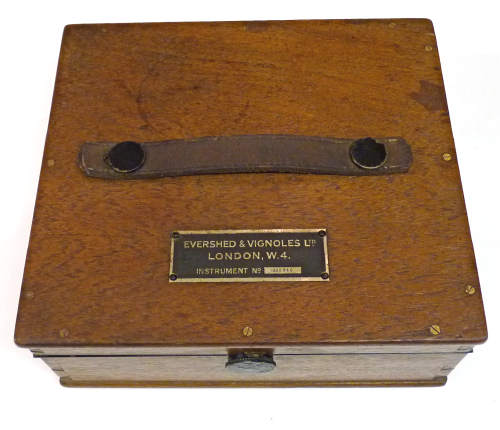
Sweep (Staybrite) for recovery of torpedoes
Serial number 1088910

This Pattern 401 instrument was made by Evershed & Vignoles for the Admiralty. It is housed in a very fine wooden case (245mm X 280mm X 120mm) which opens to reveal the purpose of the instrument and instructions for its use. The face of the instrument is made from a black painted substantial brass plate, the controls and adjustments which pass through the front panel are designed to prevent the ingress of water as is the battery housing for a single 1.5 volt cell which is located on the right hand side. Curiously no extra precaution has been made to the interface between the front panel and the wood case. The battery on/off switch has a lever which prevents the lid being closed with the switch in the on position.
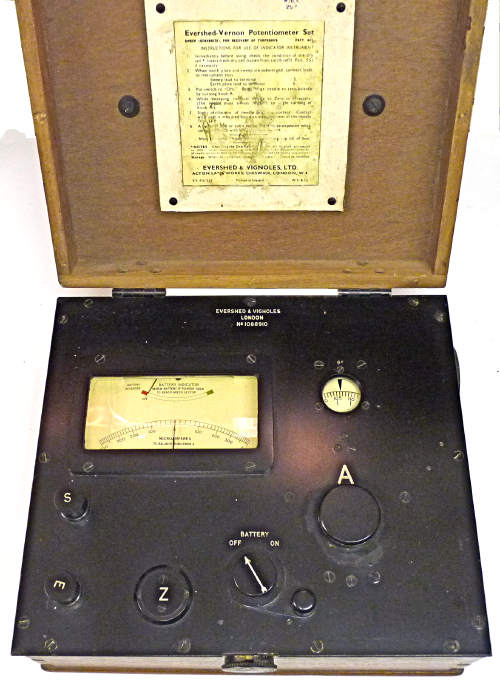
The knob A actuates the wiper of a 4 turn variable potentiometer and through a reduction gear drives the scale (0 to 115) which can be seen through the circular window. The plate marked Z covers the mechanical adjuster for the main meter 500-0-500 mA movement.
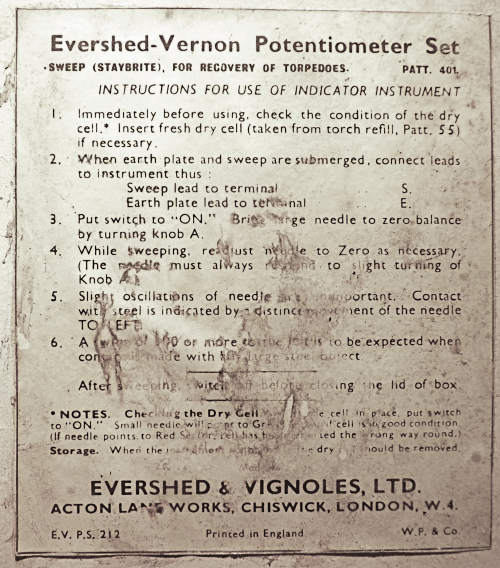
This is a close up view of the instructions which reveals the purpose of the instrument. When the sweep lead and the earth plate are connected and submerged in sea water a DC potential will be generated across the terminals, This can then be backed off with the voltage from the wiper of the potentiometer to maintain a zero reading on the main meter. If the sweep wire touches a steel object the generated voltage will be reduced thus causing the current through the meter to increase.
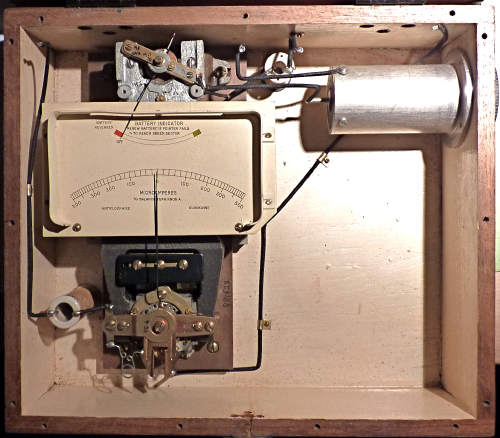
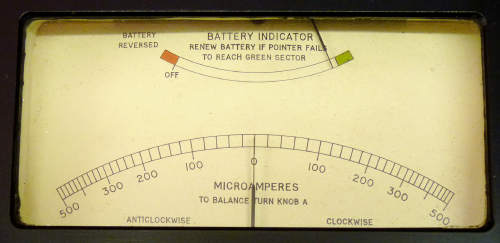
The inside of the box is pained white and the two meters are mounted on a thick piece of insulating material and are of very robust construction. Note how the wires are kept in place with brass screws and clips. The wire wound resistors are mounted on ceramic formers and the battery compartment is from a solid turned brass sleeve with a screwed outer cap.
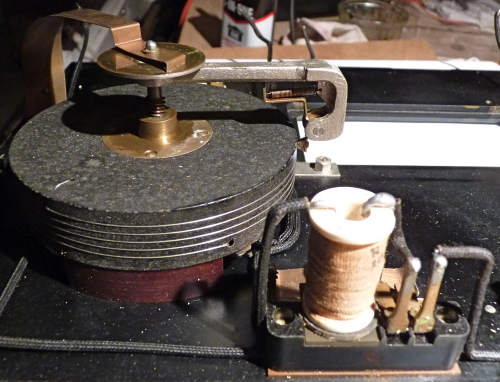
Close up view of the four turn potentiometer, the battery switch and battery indicator meter series resistor.
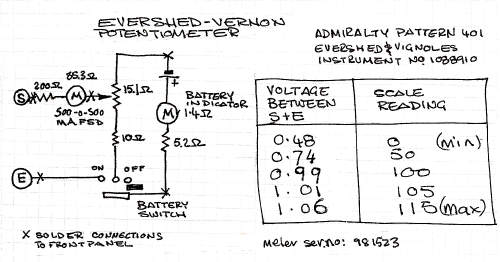
The firm's first association with the Admiralty was in 1893 and they made many kinds of instruments for shipboard use since.

